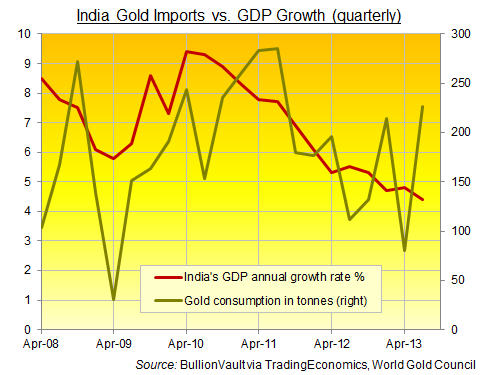India's Gold Currency Controls
- They've prohibited and restricted loans to customers on gold bullion;
- They've raised the import tax on both gold and silver to 10%;
- The sale of gold may only be made to jewelers or bullion dealers to supply the jewelry industry;
- Gold importers must ensure that 20% of all gold imported is to be exported as product.














 Email us
Email us